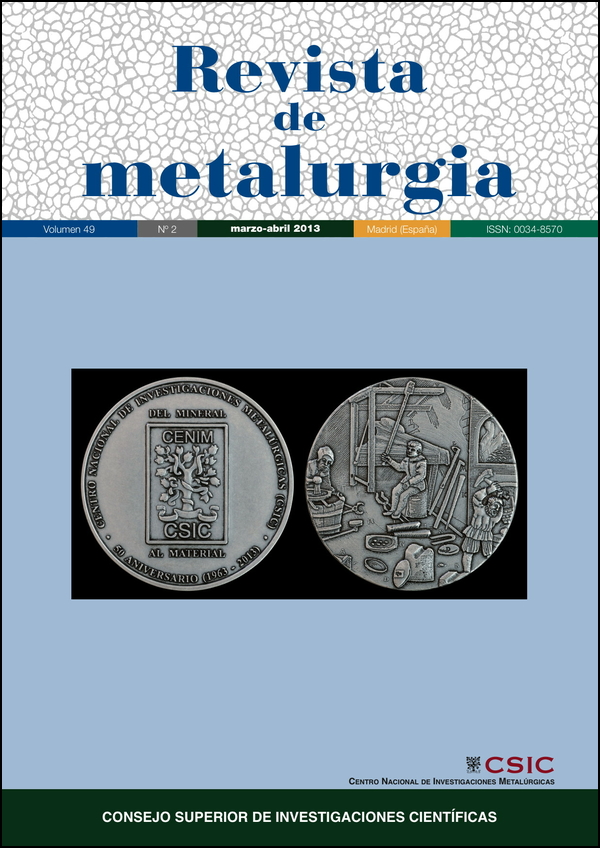Development for the production of low phosphorus steel in operations at Arcelor Mittal Tubarão
DOI:
https://doi.org/10.3989/revmetalm.1140Keywords:
Dephosphorization, Steel, BOF converterAbstract
The growing demand to produce steel with lower phosphorus (P) content happens in tandem with the increase in the content of this element in the ores used in the production of pig iron, leading to a constant evolution in the process of steel dephosphorization in BOF converters. Arcelor Mittal Tubarão (AMT), located in the municipality of Serra, Brazil, currently produces 5 million t of steel, but has an installed capacity of 7.5 million. This work aims at showing the development carried out in the dephosphorization of silicon-aluminium killed steel produced in the Arcelor Mittal Tubarão converters. The analysis of process variables such as flux addition, oxygen lance position and temperature at the end of blow are based on classical phosphorus partition models. The results compare phosphorus values in liquid steel before and after modifications in the variables and the refractory wear caused by the new procedures applied to AMT steelmaking converters.
Downloads
References
[1] K. Balajiva, A.G. Quarrel and P.Vajragupta, ISIJ Int. 40 (2000) 964-970. http://dx.doi.org/10.2355/isijinternational.40.964
[2] H.Suito, and R. Inoue, ISIJ Int. 35 (1995) 258-268. http://dx.doi.org/10.2355/isijinternational.35.258
[3] G.W. Healy, J. Iron Steel Inst. 208 (1970) 664-668.
[4] E.T. Turkdogan, Fundamentals of Steelmaking, 1st Ed. London, The Institute of Materials, 1996, pp. 186-189.
[5] E.T. Turkdogan and J. Pearson, J. Iron Steel Inst. 175 (1953) 393-401.
Downloads
Published
How to Cite
Issue
Section
License
Copyright (c) 2013 Consejo Superior de Investigaciones Científicas (CSIC)

This work is licensed under a Creative Commons Attribution 4.0 International License.
© CSIC. Manuscripts published in both the printed and online versions of this Journal are the property of Consejo Superior de Investigaciones Científicas, and quoting this source is a requirement for any partial or full reproduction.
All contents of this electronic edition, except where otherwise noted, are distributed under a “Creative Commons Attribution 4.0 International” (CC BY 4.0) License. You may read the basic information and the legal text of the license. The indication of the CC BY 4.0 License must be expressly stated in this way when necessary.
Self-archiving in repositories, personal webpages or similar, of any version other than the published by the Editor, is not allowed.
















